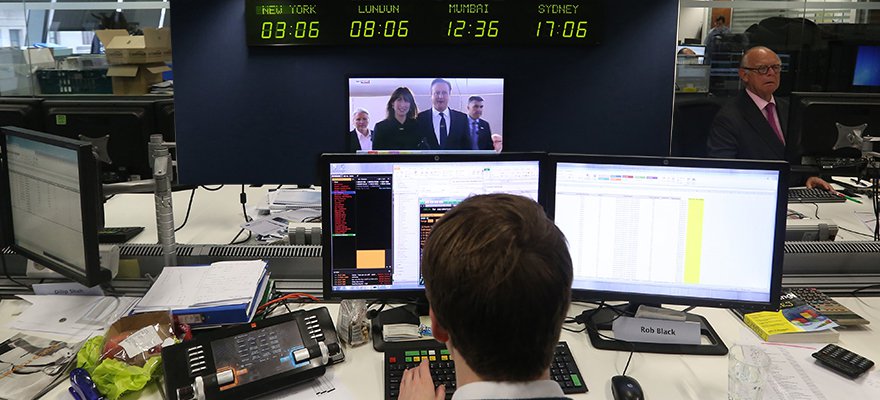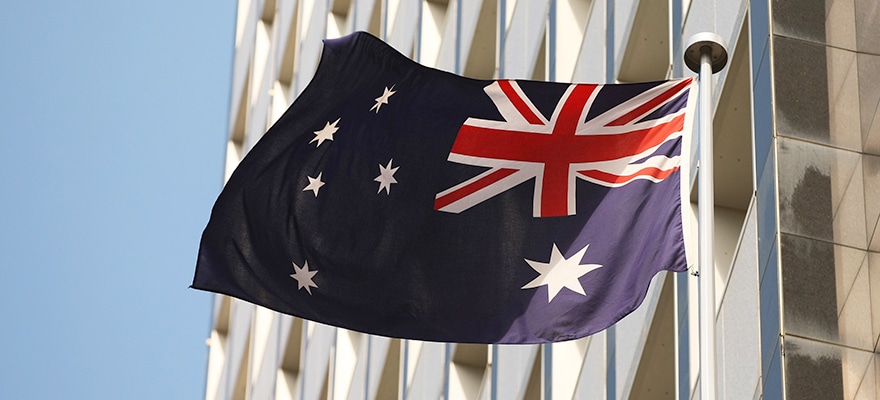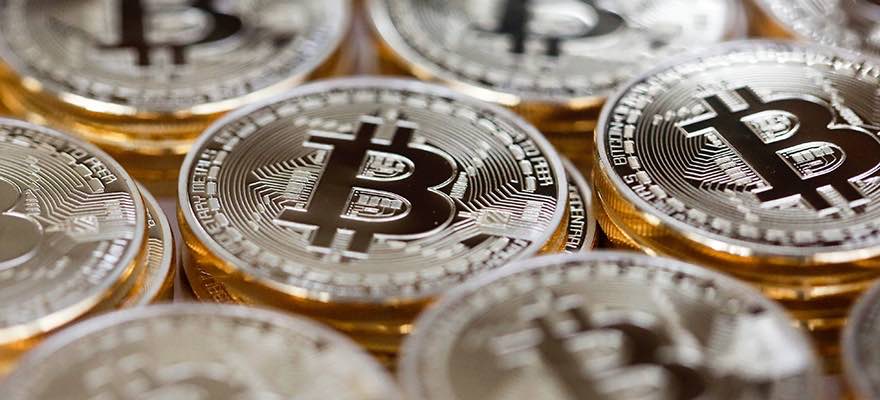This article was written by Steve Long, Chief Risk Officer at Avem Capital.
The UK Prime Minister Theresa May announced that there would be a snap general election on the 8th of June 2017, three years earlier than scheduled. May’s official reason was to strengthen her hand in the Brexit
Brexit
Brexit stands for British Exit, or in reference to the United Kingdom’s decision to formally leave the European Union (EU) as declared in a June 23, 2016 referendum. In a more immediate sense, a tight vote and unexpected result helped drive British pound (GBP) to lows that had not been seen in decades.The day following the referendum, former Prime Minister David Cameron resigned from office where he was replaced by Theresa May, who later resigned from office on June 7th, 2019. Active Prime Minis
Brexit stands for British Exit, or in reference to the United Kingdom’s decision to formally leave the European Union (EU) as declared in a June 23, 2016 referendum. In a more immediate sense, a tight vote and unexpected result helped drive British pound (GBP) to lows that had not been seen in decades.The day following the referendum, former Prime Minister David Cameron resigned from office where he was replaced by Theresa May, who later resigned from office on June 7th, 2019. Active Prime Minis
Read this Term negotiations, which she feared the other parties would try and frustrate.
The London Summit 2017 is coming, get involved!
[gptAdvertisement]
With 650 parliamentary constituencies, the general public will elect one Member of Parliament (MP) to the House of Commons for each. The Conservatives currently hold 330 seats, with 326 seats needed for a majority.
If the Conservatives add to their seats at this week’s election we could quickly see an escalation to the sterling; rallying to new yearly highs of up to $1.32/33. However, as we draw ever closer to election day and with it the almost daily release of new polls and surveys showing support for Labour, we are experiencing a few wobbles.
Recently, Labour has closed the gap from 20% behind the Tories to just 7% over the campaign, according to the average of the last 8 polls. Significantly, 7% holds a lot of weight – it’s the lead that the Conservatives had going into the last election. Anything less than this figure and they could see their majority decrease, not increase.
Markets were spooked by last year’s wrong predictions and false surveys over brexit and ‘TRUMPIT’. As a consequence I think any poll or survey needs to be taken with a pinch of salt! Indeed, the latest round of polls over the weekend were also inconclusive. The weekend polls put the Conservative lead at anything between 1% (Survation) and 12% (ICM) - even the pollsters can’t agree.
A big factor will be the uncertainty of the young vote. Whilst young people are more likely to vote Corbyn, they are also less likely to get out and vote. The sterling currency pair will be nervous up to election day as Liquidity
Liquidity
The term liquidity refers to the process, speed, and ease of which a given asset or security can be converted into cash. Notably, liquidity surmises a retention in market price, with the most liquid assets representing cash.The most liquid asset of all is cash itself.· In economics, liquidity is defined by how efficiently and quickly an asset can be converted into usable cash without materially affecting its market price. · Nothing is more liquid than cash, while other assets represent
The term liquidity refers to the process, speed, and ease of which a given asset or security can be converted into cash. Notably, liquidity surmises a retention in market price, with the most liquid assets representing cash.The most liquid asset of all is cash itself.· In economics, liquidity is defined by how efficiently and quickly an asset can be converted into usable cash without materially affecting its market price. · Nothing is more liquid than cash, while other assets represent
Read this Term and volume dries up and HFT and Algos disappear for a few days.
One question we ask is why make a market to be 5% offside immediately? Another factor to take into consideration during election day will be the timing of the result. The result will likely be announced around 4:00 am, when most of the UK is asleep. Early indications however, may come as early as 10:00 pm on Thursday, when the exit polls are announced. In recent times, these have been generally more reliable than the pre-election polls, with confirmation of their accuracy proving evident as the first results are announced from about 1:00 am onwards.
Possible result outcomes could produce the following permutations:
- A Labour win: GBP drops 5/10%
- A Conservative majority: GBP increases +3%
- A hung parliament would probably see a 3/5% spike in a very short time...say 30 seconds, before dropping significantly!
Recently we have seen the FTSE benefit from being cheap. This has given exports a helping hand, however a stronger pound would hurt the FTSE, especially the FTSE250 which has just topped 20000. A Labour victory or hung parliament would immediately turn the markets negative. We would likely see scenes similar to the day Brexit was announced, i.e. a 10% drop in seconds.
However, before the excitement of election day, we first have the ECB and Draghi to contend with. He has already stated that he will say something special!
This article was written by Steve Long, Chief Risk Officer at Avem Capital.
The UK Prime Minister Theresa May announced that there would be a snap general election on the 8th of June 2017, three years earlier than scheduled. May’s official reason was to strengthen her hand in the Brexit
Brexit
Brexit stands for British Exit, or in reference to the United Kingdom’s decision to formally leave the European Union (EU) as declared in a June 23, 2016 referendum. In a more immediate sense, a tight vote and unexpected result helped drive British pound (GBP) to lows that had not been seen in decades.The day following the referendum, former Prime Minister David Cameron resigned from office where he was replaced by Theresa May, who later resigned from office on June 7th, 2019. Active Prime Minis
Brexit stands for British Exit, or in reference to the United Kingdom’s decision to formally leave the European Union (EU) as declared in a June 23, 2016 referendum. In a more immediate sense, a tight vote and unexpected result helped drive British pound (GBP) to lows that had not been seen in decades.The day following the referendum, former Prime Minister David Cameron resigned from office where he was replaced by Theresa May, who later resigned from office on June 7th, 2019. Active Prime Minis
Read this Term negotiations, which she feared the other parties would try and frustrate.
The London Summit 2017 is coming, get involved!
[gptAdvertisement]
With 650 parliamentary constituencies, the general public will elect one Member of Parliament (MP) to the House of Commons for each. The Conservatives currently hold 330 seats, with 326 seats needed for a majority.
If the Conservatives add to their seats at this week’s election we could quickly see an escalation to the sterling; rallying to new yearly highs of up to $1.32/33. However, as we draw ever closer to election day and with it the almost daily release of new polls and surveys showing support for Labour, we are experiencing a few wobbles.
Recently, Labour has closed the gap from 20% behind the Tories to just 7% over the campaign, according to the average of the last 8 polls. Significantly, 7% holds a lot of weight – it’s the lead that the Conservatives had going into the last election. Anything less than this figure and they could see their majority decrease, not increase.
Markets were spooked by last year’s wrong predictions and false surveys over brexit and ‘TRUMPIT’. As a consequence I think any poll or survey needs to be taken with a pinch of salt! Indeed, the latest round of polls over the weekend were also inconclusive. The weekend polls put the Conservative lead at anything between 1% (Survation) and 12% (ICM) - even the pollsters can’t agree.
A big factor will be the uncertainty of the young vote. Whilst young people are more likely to vote Corbyn, they are also less likely to get out and vote. The sterling currency pair will be nervous up to election day as Liquidity
Liquidity
The term liquidity refers to the process, speed, and ease of which a given asset or security can be converted into cash. Notably, liquidity surmises a retention in market price, with the most liquid assets representing cash.The most liquid asset of all is cash itself.· In economics, liquidity is defined by how efficiently and quickly an asset can be converted into usable cash without materially affecting its market price. · Nothing is more liquid than cash, while other assets represent
The term liquidity refers to the process, speed, and ease of which a given asset or security can be converted into cash. Notably, liquidity surmises a retention in market price, with the most liquid assets representing cash.The most liquid asset of all is cash itself.· In economics, liquidity is defined by how efficiently and quickly an asset can be converted into usable cash without materially affecting its market price. · Nothing is more liquid than cash, while other assets represent
Read this Term and volume dries up and HFT and Algos disappear for a few days.
One question we ask is why make a market to be 5% offside immediately? Another factor to take into consideration during election day will be the timing of the result. The result will likely be announced around 4:00 am, when most of the UK is asleep. Early indications however, may come as early as 10:00 pm on Thursday, when the exit polls are announced. In recent times, these have been generally more reliable than the pre-election polls, with confirmation of their accuracy proving evident as the first results are announced from about 1:00 am onwards.
Possible result outcomes could produce the following permutations:
- A Labour win: GBP drops 5/10%
- A Conservative majority: GBP increases +3%
- A hung parliament would probably see a 3/5% spike in a very short time...say 30 seconds, before dropping significantly!
Recently we have seen the FTSE benefit from being cheap. This has given exports a helping hand, however a stronger pound would hurt the FTSE, especially the FTSE250 which has just topped 20000. A Labour victory or hung parliament would immediately turn the markets negative. We would likely see scenes similar to the day Brexit was announced, i.e. a 10% drop in seconds.
However, before the excitement of election day, we first have the ECB and Draghi to contend with. He has already stated that he will say something special!






















